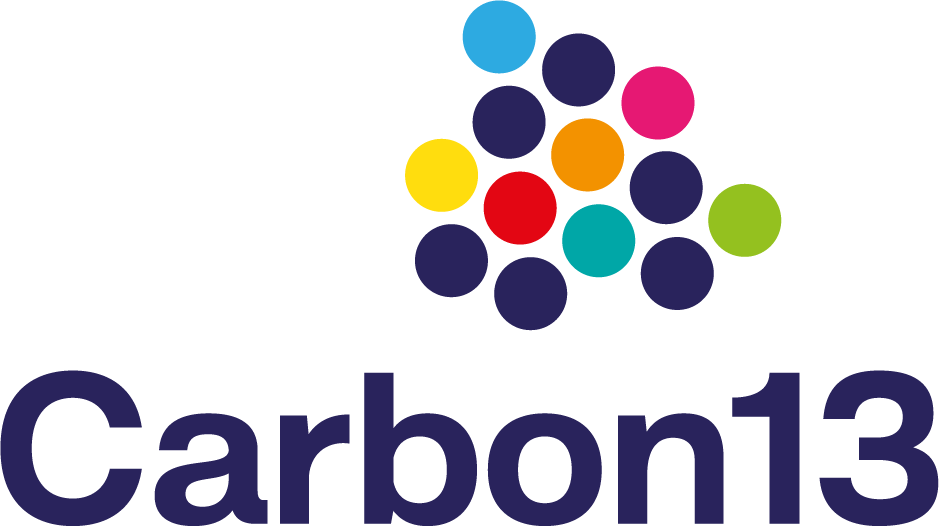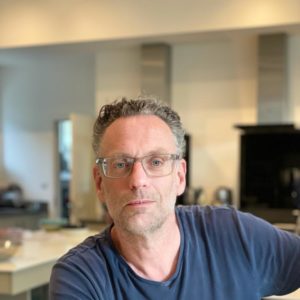Telling stories that matter about your climate tech startup
Paul Bourne at TEDx’s “Telling Stories that matter”
Twitter
LinkedIn
How to turn your climatetech startup into a compelling story
Sharing our stories is crucial for building robust relationships within climate tech communities and developing a credible narrative for investors. Stories are what turn founder hunches into full scale startups with the potential to reduce carbon emissions by 10 million tonnes CO2e yearly. Paul Bourne, our Storyteller-in-Chief and at heart, as well as Artistic Director at the Cambridge Junction for over 20 years now, explains how we can craft stories that engage people with the climate crisis and your climate tech solutions to it. In his experience, starting with the particular – engaging people in your story – before moving on to a more general picture is the key to success. So, based on his recent TEDx talk, here are all of Paul’s most helpful tips:
Climate emergency, climate tech and storytelling:
The ‘good thing’ about an emergency is that people often respond; running into a burning building to save a life, gathering a community for collective action against an injustice, or building a climate tech venture to help solve the climate crisis. Taking these brave and bold decisions embraces vulnerability, but also possibility; the possibility that something incredibly good can come out of something incredibly bad. When we take this ‘incredible’ action, when we reflect on the results of our actions and share them, we are “telling stories that matter”.
Most of the stories that we tell, hear or read, are about disruption or change.
If I go back to my childhood, I can remember vividly Dr Seuss’s crazy, upside-down, back to front, beautiful world. One thing Dr Seuss didn’t write – but he could have, is a reflection on storytelling: “The Cat sat on the mat is not a great story, the cat sat on the Dog’s mat…now that is a great story!”
Most of the stories that we tell, hear or read, are about disruption or change. In the case of the Cat and the Dog, this is going to be a battle, a struggle to see who comes out on top. Stories are often about struggles; a fight for your rights, or for justice, a fight for your home or territory, a fight for the future; a response in the face of an emergency.
In the Climate Emergency narrative, we see scales of ‘struggle stories’, starting with the particular; saving our home, moving to the niche; saving our community, and to the universal; saving our planet. Our “Climate Stories” are certainly far more complex and nuanced than the cat and dog’s, with layers of scientific, environmental, social and economic forces that come into play. But a commonality of theme is the fundamental struggle of people and places, and these are the stories we have to tell.
How to tell a compelling story and engage people in your climate tech solution to the Climate Emergency:
1. Start with the particular
In my recent TEDx talk – telling stories that matter, I start with The Particular – me!
What questions am I asking about my world? What do I see? This is the first lens of storytelling, what do you see – in front of you, in front of your family, in front of your community. This includes your personal journey, the years of stories you have built up; including interests, work or research. Stories from colleagues, friends, family or foes, experiences that will drive or ‘fuel the content’ of your future story. This ‘Particular Lens’ in the case of many ‘climate tech start-ups’ focuses on ‘The Founder Story ‘… “this is what I have been researching, exploring, embracing, and now I can see how it can support or challenge the future of … energy storage, biofuels, carbon markets, green hydrogen, AI robotics, Battery Recycling… (fill in the gaps for your story). This is me, my story, close-up and personal.”
2. Take a larger perspective
The second lens of the climate tech start-up story goes beyond the founder to a wider, Universal series of questions about the world as we find it. Essentially asking how and why we do the things we do. These questions drive the narrative of the story – I see something far away; and I question it, I ask “what if..” . What if I add my personal story to this ‘Universal Lens ‘ narrative. Now we have… Why me? Why now? Why This? Who are the people (and places) effected? What’s the struggle? and What will the new world look like?
3. Take a step back and combine the two
Combining our lenses of the Particular and lenses of the Universal through Questioning, starts to drive our stories – stories that can be told around the campfire, in the classroom or in the investors’ boardroom…
So the cat is looking at the dog’s mat, this is a personal story, but it’s also a place or space story, an environment or ecosystem story. Now ask the question – where are you looking? What do you see that no one else sees? Or, what do you see that everyone else sees, but is doing nothing about?
4. In a dynamic framework
If we take a step back and accept that most stories are about struggles or disruption, we start to see a useful potential framework for establishing the ‘world of our story ‘, exploring the struggle, and then questioning how the new world will be better. It’s powerful to own that word ‘better’ or ‘bett-ER’ as it has an interesting storytelling dynamic to it – ‘ the -ER’ Factor. When we tell stories of the future, it can be useful to relate our new world vision to how things will be different; our product, technology or service will somehow be ‘bett -er’ than what currently exists. So in our start-up stories we imagine, describe and justify who it is bett-er for, how it is Better? Cheap-er ? Green-er ? Lean-er ? Fast-er? Slow-er ? Clean-er or simply Fair-er ?
So now we have a dynamic of describing the Present and Future situation, what we see and what we can imagine being better. But we also need to include at least one more element in our storytelling; the Past. By using our ‘Past -Present- Future Lens’, we can see the world as it was, as its is, and as it will be. One method for effectively owning the Past narrative is the “Thank You..” , or “F**k You…” approach. Essentially in the “Thank You…” scenario we take a look at cool developments in history that have moved things on “in a good way”, ideas that we are able to explore, praise and be amazed by. From here we can take ownership over moving things forward with our new ideas, evolving from the past into a story of the future. I title this as the “Thank you very Much Mr Hobson, we’ll take it from here …“. The Mr Hobson in question is the 16th century entrepreneur after whom we take the phrase Hobson’s Choice. Mr Hobson’s horseback taxi riding service from Cambridge to London was improved for both customer satisfaction and animal welfare, by the hirer only being able to ride or hire the next, most rested, horse: Hobson’s Choice. Thank you Mr Hobson, we’ll take your welfare and customer service focus from here – for our EV Vehicles, for our retro-fit SaaS platform, for our climate action solution… we’ll build on your themes, ideas and values and create our own future.
“The F**k you, we’ll take it from here” storytelling, changes the narrative to focus on the damage or problems that people and organisations have caused, directly or indirectly. We look at what has happened negatively to one of our three scales – the personal, local and universal and we change that narrative; because it matters, because its an emergency. We are driven to tell a new story based on the negative impact of the old story…. ‘You chopped down trees and destroyed ecosystems for palm oil, well F**K you, our new lab-based oils are a direct response… this is our struggle, our decarbonising story, our environmental battle (our dog’s mat!?)…’
So what do we have? A cat and a dog and load of questions… a struggle at various scales, some lightly sprayed swear words, and a re-imagining of the future through various lenses.
My final thought (for today!) on storytelling for climate tech start-ups solving the Climate Emergency, is that we need to tell stories that are both ‘Credible’ and ‘Incredible’. The combination of these two themes is vital if people are to ‘believe’ our stories. ‘Credible’ are the facts, the evidence; if you’re telling a “F**k you” story , what is the damage that has been done – facts and figures, then how will the future be – facts and figures?. The Credible also extends to you personally, which stories have you told before that are evidence-based, can you factually show us how your ideas will improve things (-ER factor)? Then there’s the ‘Incredible’; what is amazing about what you are going to do ? What is brave, curious, extraordinary? That will be the Incredible; your vision of the new world, because of what you see, and because of the action you will take.
Fundamentally, our Cat has a vision for change – how will she tell the story of ‘the reality’ of the future? Which lenses will she use? Will she tell a story that is Credible and Incredible, that is personal and universal? The Founder story, the Place story, the Citizen story? A story of the Past, of the Present and the Future?
How Carbon13’s Venture Builder help you develop compelling stories right from the start:
Storytelling, not just technical validity is what makes your community engage with your climate tech solutions to the climate crisis. No matter how sophisticated your technology or how robust your model, if you don’t have the kind of skillset which can compel experts and investors to listen, developing your startup will be hard. This is why at Carbon13 we help you from the start develop a strong narrative as well as technically flawless ideas.
Meet Paul Bourne
Paul works in ‘Creative Engagement’ as a Theatre Director, Teacher and Storyteller. When not directing plays, Paul’s key areas of interest are in exploring creativity in Start-ups, enterprise thinking, collaborative working, communication impact and transformational leadership; all wrapped up in telling a great story!
Alongside Start-ups Venture Builders and Accelerators (Carbon13!), Paul works on Entrepreneurship with Cambridge University Business School Faculty and consults with a wide variety of World-Class clients using Storytelling to focus on two key areas: “Cultural Transformation” with Liverpool Football Club, NIKE, The NHS and BBC, and on “Communication and Sustainability Impact” with Fairtrade, Wyss Institute, Cambridge University, Astra Zeneca and St Andrew’s University.

